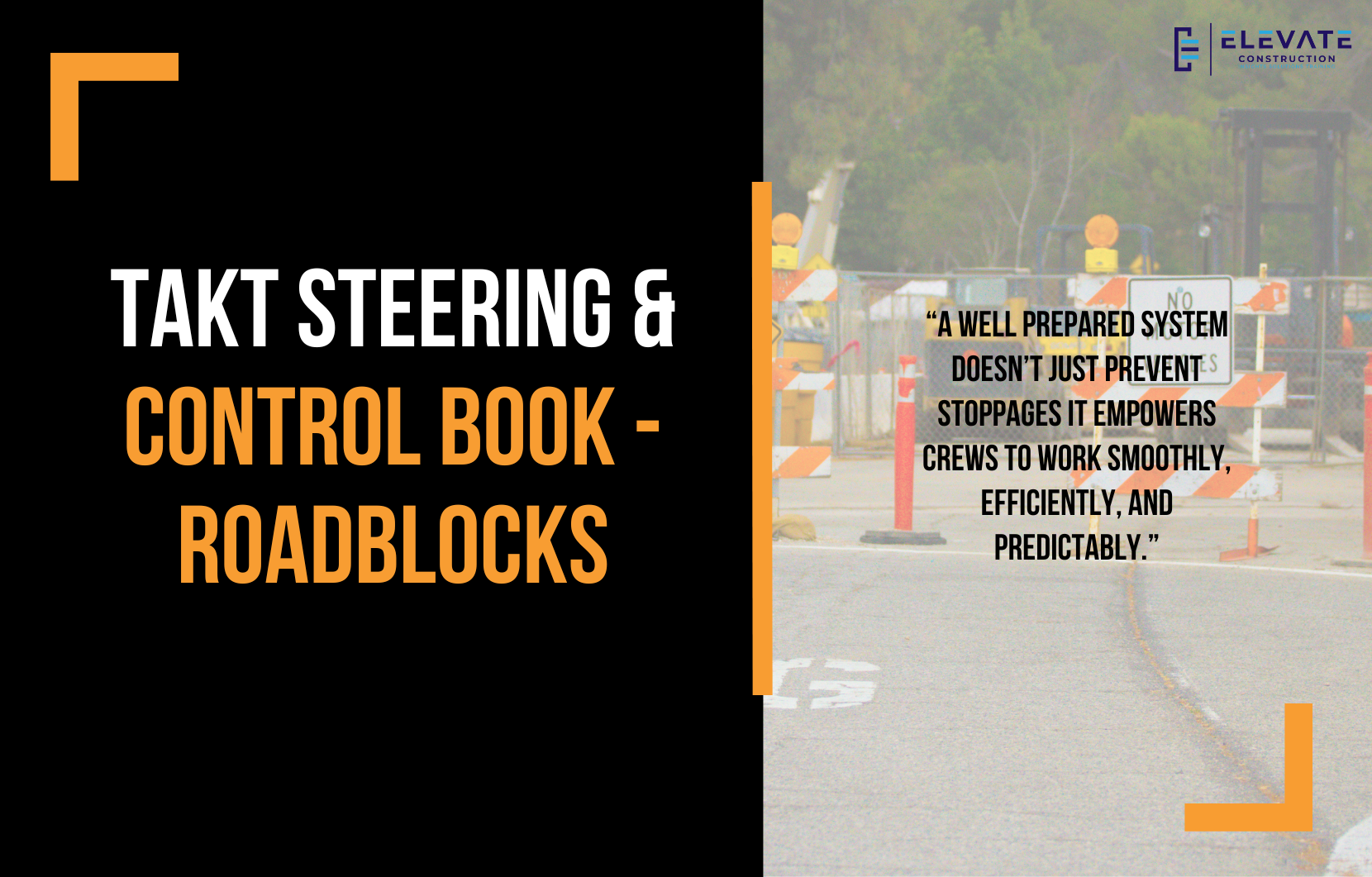Keeping the Train of Trades on Track
In construction, one of the most overlooked yet critical success factors is roadblock removal. We’ve already discussed constraints the built in limits of the system design that first planners must monitor and adjust. Now, we turn to roadblocks, which are very different. Roadblocks are the obstacles that appear in the environment and interrupt the flow of work.
To better understand this, let’s use the analogy of a train of trades.
The train represents the trades. The tracks represent the zones. The supply depot is the laydown area, and the station is the work zone. The foreman’s role is to make sure the depot is stocked, the station is ready to receive, and the tracks are clear. They’re not riding along with the crew they’re out ahead, preparing the way.
Foremen prepare the train’s work in four main ways:
- Ensuring the tracks are clear.
- Confirming the laydown yard is stocked and organized.
- Making sure the station (work zone) is ready to receive value.
- Checking for anything that might stop the train.
This train analogy aligns closely with real railway roles. For example:
- A division manager (like a general superintendent) oversees the system’s overall performance.
- A train master or track master (like a senior superintendent) manages operations and keeps the train moving.
- Signal supervisors and road masters (like assistant supers and field engineers) ensure smooth flow and signals.
- And most importantly, foremen act like yard masters, track inspectors, and locomotive engineers responsible for checking tracks ahead, managing the yard, and driving the train forward.
In construction terms, this means foremen are clearing zones, organizing laydown yards, and ensuring the crew can move without interruption. Anything that blocks this flow is a roadblock.
Types of Roadblocks
Roadblocks come in three categories:
- Needs: Things required to move forward (e.g., a ready work area, layout, or permissions).
- Removals: Things in the way that must be cleared (e.g., failed inspections, defects, or obstacles in the zone).
- Adaptations: Situations that can’t be removed but must be adjusted to (e.g., owner changes, weather events, or staging delays).
It’s important to recognize that roadblocks are not system constraints. They exist in the environment and must be dealt with proactively. First planners focus on designing and maintaining the train and tracks, while last planners look ahead from within the train to clear the path of roadblocks.
Without proper monitoring, design, and preparation, the project train will constantly stop, slow down, or even break down. But with visibility, foresight, and a clear system for identifying and removing roadblocks, the train of trades can flow smoothly and predictably.
Zone vs. Supply Roadblocks
- Zone roadblocks include issues like weather, owner changes, lack of planning, unready work areas, missing permissions, failed inspections, or defects.
- Supply roadblocks include missing information, resources, labor, equipment, or materials anything that impacts the supply chain and laydown yards.
Both types of roadblocks will either delay the start of work or delay the finish and both must be identified and resolved quickly to maintain flow.
Supporting the Trades
The integrated production control system is designed to give last planners what they need. Roadblock removal is not just about clearing the way it’s about creating a support system for the trades so they can focus on building.
As builders, our role is not only to avoid getting in the way, but to actively prepare the path, anticipate needs, and remove roadblocks before they stop the flow. That’s how we elevate the construction experience for everyone on site.
Key Takeaway
Roadblock removal is essential to maintaining flow in construction. By clearly separating system constraints from environmental roadblocks, foremen and planners can anticipate needs, remove obstacles, and adapt to challenges before they cause delays. A well prepared system doesn’t just prevent stoppages it empowers crews to work smoothly, efficiently, and predictably.
If you want to learn more we have:
-Takt Virtual Training: (Click here)
-Check out our Youtube channel for more info: (Click here)
-Listen to the Elevate Construction podcast: (Click here)
-Check out our training programs and certifications: (Click here)
-The Takt Book: (Click here)
Discover Jason’s Expertise:
Meet Jason Schroeder, the driving force behind Elevate Construction IST. As the company’s owner and principal consultant, he’s dedicated to taking construction to new heights. With a wealth of industry experience, he’s crafted the Field Engineer Boot Camp and Superintendent Boot Camp – intensive training programs engineered to cultivate top-tier leaders capable of steering their teams towards success. Jason’s vision? To expand his training initiatives across the nation, empowering construction firms to soar to unprecedented levels of excellence.
On we go

